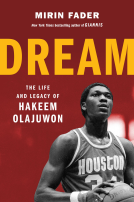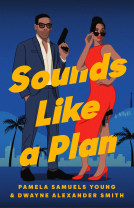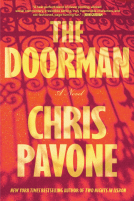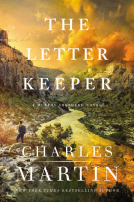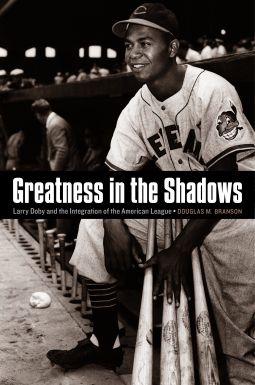
Greatness in the Shadows
Larry Doby and the Integration of the American League
by Douglas M. Branson
This title was previously available on NetGalley and is now archived.
Send NetGalley books directly to your Kindle or Kindle app
1
To read on a Kindle or Kindle app, please add kindle@netgalley.com as an approved email address to receive files in your Amazon account. Click here for step-by-step instructions.
2
Also find your Kindle email address within your Amazon account, and enter it here.
Pub Date Apr 01 2016 | Archive Date Apr 01 2016
Description
Well into the 1950s Doby was the only African American All-Star in the American League during a period in which fifteen black players became National League All-Stars. Why is Doby largely forgotten as a central figure in baseball's integration? Why has he not been accorded his rightful place in baseball history? Greatness in the Shadows attempts to answer these questions, bringing Doby's story to life and sharing his achievements and firsts with a new generation.
Advance Praise
“Douglas Branson’s new book on Larry Doby is a must-read for anyone who cares about the Jackie Robinson story and the integration of baseball. Doby has been neglected for far too long, so it’s exciting to see Branson give Doby his due.”—Terry Pluto, author of Our Tribe: A Baseball Memoir and columnist for the Cleveland Plain Dealer
“From Bill Veeck to Mickey Mantle and Willie Mays, Douglas Branson examines and contextualizes Larry Doby’s contributions to the game during a time when baseball captivated the country. Branson’s personal memories of his subject add depth to a well-researched account.”—Bill Brink, baseball writer for the Pittsburgh Post-Gazette
Available Editions
| EDITION | Hardcover |
| ISBN | 9780803285521 |
| PRICE | $34.95 (USD) |
Links
Featured Reviews
The story of Larry Doby is one that not many people remember because even though he was the first black baseball player in the American League, he wasn’t the first one to play Major League Baseball. While Jackie Robinson’s story is quite well known, author Douglas Branson tells the story of Doby as well, which isn’t much different than Robinson’s for what he had to endure, but under a different set of ballparks and with a different integration pioneer.
Branson makes the case that Doby is just as important a figure as Robinson in the integration of baseball along several fronts. He does take away some of the luster of Robinson’s baseball prowess – not by dismissing what he accomplished – but by comparing the statistics of both men and showing that Doby was Robinson’s equal on the field. Also, he calls into question the motives of Branch Rickey (while again respecting the work Rickey did) by noting how many of Rickey’s transactions resulted in a net profit to him. Branson gives a lot of credit to Bill Veeck, the owner of the Cleveland Indians, for integrating baseball as well by bringing Doby to the Indians just weeks after Robinson made his debut with the Dodgers.
It is here where Branson starts to question if the reason that Doby and Veeck were not given enough credit for integration because of several factors. Veeck was not popular with his fellow owners, Doby did not play in New York, which was going through its “golden age” of baseball and therefore did not get the same recognition as a great player as Robinson, Willie Mays, or Mickey Mantle. Of the latter, Branson wrote much about he seemed to be made larger than life by an adoring press and fans. Like with Robinson, Branson never diminishes what Mays or Mantle accomplished, but did question why they received a lot of fanfare while Doby did not.
Branson also notes that the National League became integrated as a whole and with more teams employing more black players faster than the American League and as a result of that, Doby may not get the attention for what he did as much as Robinson. He also describes the racial hatred and taunting that Doby received as well. He wants the reader to realize that while Robinson had to endure a lot, so did Doby and he did not have the advantage of preparing for it the previous season in the minor leagues like Robinson did. Doby was given a baptism by fire.
If this review sounds like it keeps hitting on the same points over and over, this book did the same thing and that made it a difficult read at times. It seemed that Branson was repeating points he was trying to make or certain facts and events over and over. He would repeatedly refer back to an earlier reference by noting the chapter or stating that the point he was making would also be explained in an upcoming chapter. That was a shame because it kept the book from having a good flow and making Doby’s story even more compelling.
Nonetheless, I felt it was a very good source of information for learning more about the first black player in the American League and the case he makes that Doby is underappreciated for what he did for the game of baseball is strong. It just didn’t read as easily as I hoped. I give the book five stars for the information and three for the writing to make it a four-star book. I do recommend this book for readers who are interested in learning more about Doby or the integration of Major League Baseball.
I wish to thank University of Nebraska Press for providing an advance review copy of the book through NetGalley in exchange for an honest review.
 Educator 308336
Educator 308336
This book offers excellent insight into the integration of baseball in the late 1940's and Larry Doby's personal and professional journey. The story bounces back and forth between Doby and many of his black and white peers. Baseball in the late 40's, 50's, and 60's will always have a warm spot in the heart of true baseball fans.
When you mention the color barrier in professional baseball, Jackie Robinson and a few others come to mind. But, there were those who came before them. Those who played beside them or perhaps in the Negro League. This books tells their untold story. A baseball fanatic is sure to get lost in the telling.
 Pat L, Reviewer
Pat L, Reviewer
This was a very interesting book. First even though I knew of the name Larry Doby I did not know that he entered the American League 11 weeks after Jackie Robinson. He was also for a number of years was the only African American playing in the American League, while the National League would continue to add players. Also he was the star of the 1948 World Series, first African American to hit a homerun in the World Series, first to play on a championship in both the Major league with the Cleveland Indians and also with the Newark in the Negro Leagues. First to win the Major League home run title (1952), and again in 1954. There are other stats as well, one is that he was also the second African American Manager in the big leagues, so not only the second player but also the second manager, and you know what he never complained once about any of it. He did not go to the minors for a year he went straight to the majors, and Bill Veeck tried do things to help him but not everything worked out. the bases of this book really is that the author is trying to say that while he played in Cleveland he did not get the press as did the players in the New York market, which is true for the most part. The author also goes into the press having favorites. That is also true just look at how the Press treated Maris as opposed to Mantle. If Mantle would have hit 61 it would have been totally different, but he got hurt and they lit into Maris. Doby playing for the Indians was hammered by the local press and the author goes into it. I did find out that there is a section in Yogi Berra museum all about Larry Doby. Their families were very good friends and Yogi made it part of the deal to have a museum that Larry Doby had to be included. I thought that was very interesting. There was a lot about Larry Doby I did not know about and though yes he was the second person he still was the first for the American League and for years was the only African American representing the American League not just because he was African American but because he had the numbers and for most of the 50’s he was the only one. The history between the two leagues is very interesting because Bill Veeck had a hand in integrating the Indians and then when he became owner of the White Sox he did the same with them. While National League teams would have three players some American League teams would have one or none until the late 50’s or early 60’s. Doby would be the last to retire from playing for the players who would come into the game between 47 and 50, but he did not get elected into the Hall of Fame until 1998, and the Indians did retire his #14 and have a statue in front of their stadium of Larry Doby. Overall a good book.
Readers who liked this book also liked:
Pamela Samuels Young; Dwayne Alexander Smith
Multicultural Interest, Mystery & Thrillers, Romance
Jodi Picoult; Jennifer Finney Boylan
General Fiction (Adult), Literary Fiction, Women's Fiction




